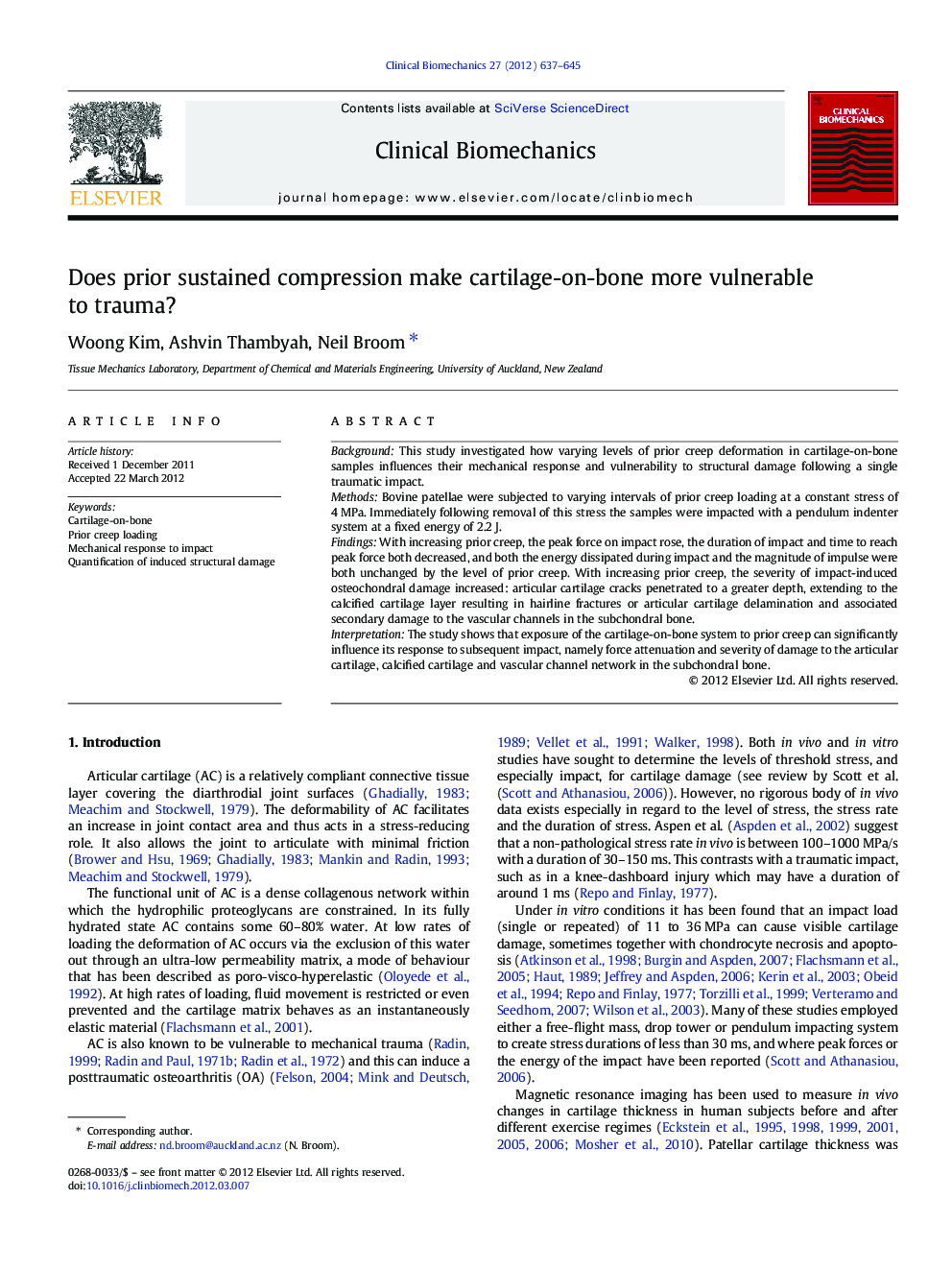| Article ID | Journal | Published Year | Pages | File Type |
|---|---|---|---|---|
| 4050776 | Clinical Biomechanics | 2012 | 9 Pages |
BackgroundThis study investigated how varying levels of prior creep deformation in cartilage-on-bone samples influences their mechanical response and vulnerability to structural damage following a single traumatic impact.MethodsBovine patellae were subjected to varying intervals of prior creep loading at a constant stress of 4 MPa. Immediately following removal of this stress the samples were impacted with a pendulum indenter system at a fixed energy of 2.2 J.FindingsWith increasing prior creep, the peak force on impact rose, the duration of impact and time to reach peak force both decreased, and both the energy dissipated during impact and the magnitude of impulse were both unchanged by the level of prior creep. With increasing prior creep, the severity of impact-induced osteochondral damage increased: articular cartilage cracks penetrated to a greater depth, extending to the calcified cartilage layer resulting in hairline fractures or articular cartilage delamination and associated secondary damage to the vascular channels in the subchondral bone.InterpretationThe study shows that exposure of the cartilage-on-bone system to prior creep can significantly influence its response to subsequent impact, namely force attenuation and severity of damage to the articular cartilage, calcified cartilage and vascular channel network in the subchondral bone.
